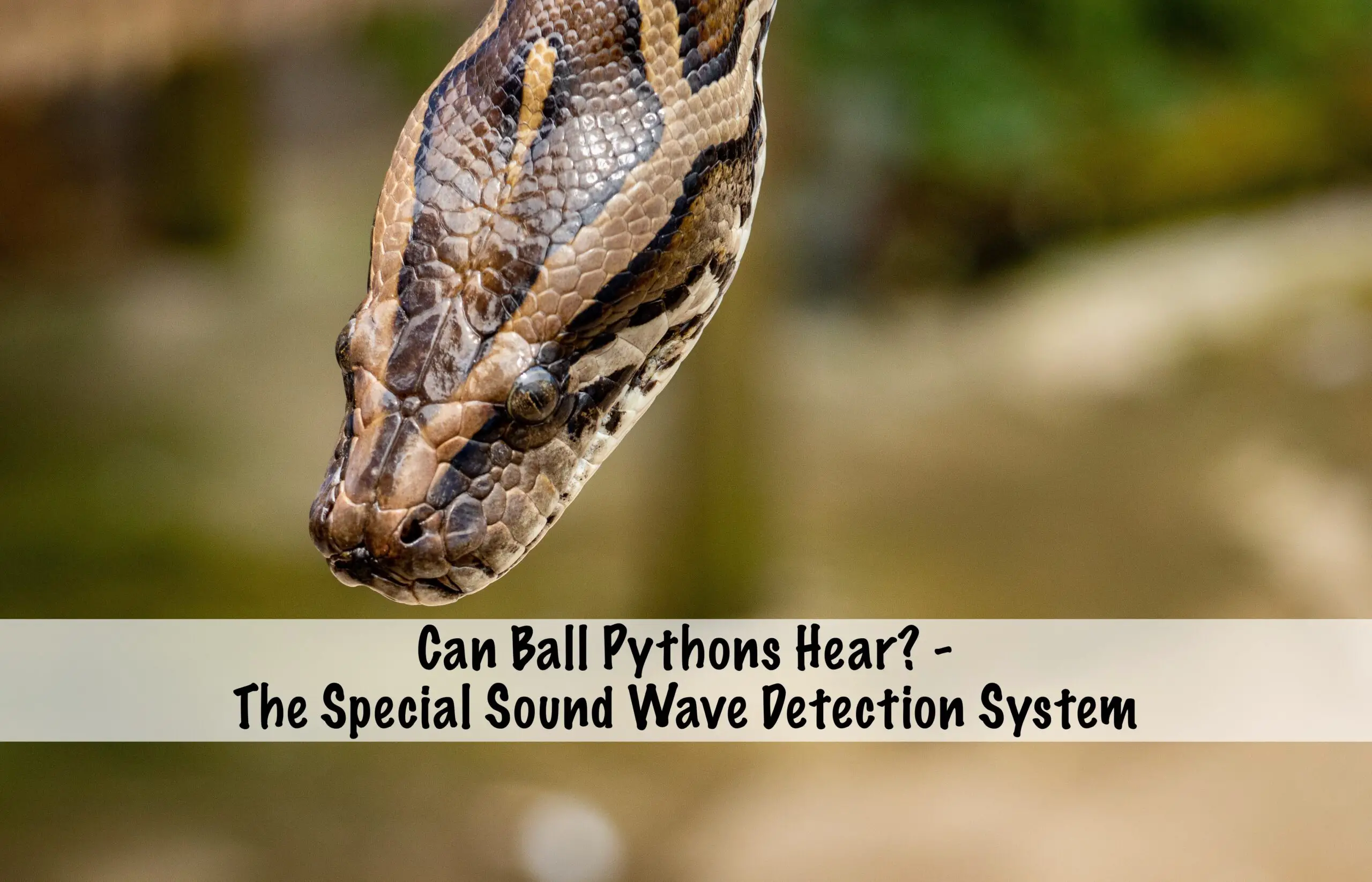I am aware that this thought is running through your head. But don’t worry; Reptileszilla has heard of your stumped question!
The concern of whether ball pythons hear or not, how they listen, and other issues will all be thoroughly covered in this brief article.
How do Snakes Hear Sounds?
Ball Pythons don’t have ears, despite the fact that they appear to lack them.
Ball Pythons are sound-blind. Yet, they are aware of noises.Weird,right?
Humans are able to hear sounds in a wide variety that they cannot. We have ears, which explains this. Conversely, ball pythons do not. To hear sounds, they must respond to vibrations. They are able to pick up sound waves that are moving through the surface and the environment.
Snake Ear Anatomy
The theory that snakes have hearing, which many people are unaware of, is true. Like other animals, snakes have two ears that are situated right behind their eyes. They have pinholes on the edges of their heads that are ear apertures rather than visible ears, often known as ear folds, pinnae, or auricles. There is a functioning internal ear and yet no eardrum or middle ear within each small earhole.
The “quadrate bone” is a bone in the mouth that ball pythons have in addition to their inner ear structure. While they are roaming over, this bone shifts very little in reaction to the sounds. This is noteworthy because, for a very long time, scientists thought that snakes could only sense these waves if they were on the land. However, it has recently been shown that snakes can truly sense airborne sounds as well because of this bone.
What Sounds Can Snakes Hear?
Ball pythons can listen even though they lack apparent ears. The audible range of ball pythons is restricted, and they perceive sound quite differently from humans.
Ball pythons have a hearing range of 80 to 1,000 Hz. They can better hear low-pitched sounds between 80 and 160 Hz. They are especially susceptible to sensations picked up from the ground by their bottom jaw. Although not very good, ball pythons can detect some airborne sounds. This indicates that they can detect rhythm and bassline but not the majority of human words.
To identify approaching threats, ball pythons use their resonance ears. They probably don’t interact with other snakes using their hearing. Because their own hiss is super high pitched, ball pythons are unable to even detect it.
How Sensitive Are Ball Pythons To Sound?
Yes, strong sounds and disturbances do impact snakes in particular. Ball pythons are notoriously delicate and quickly stressed.
A ball python, for instance, will become extremely agitated by a drum set, and when they become anxious they stop eating. Although they do not have an outward ear entrance, the organs are still present inside. They are extremely sensitive to vibrations as a result. Because the vibrations are being transmitted through the ground, coverings won’t be able to properly absorb this.
Even when we think we are as calm as possible, we are undoubtedly highly unpleasant and noisy. Consider what our pounding feet do to the Ball Python if you examine how they can detect the sounds of a little rodent skittering across the ground. Keep in mind that it’s the vibration rather than the sounds that counts.
Can Ball Pythons Hear Sound You When You Talk?
Since the typical human tone is at a frequency of around 250 Hz and a snake’s listening is most sensitive between 200 and 300 Hz, we may conclude that a pet snake can detect you speaking to it. This may provide credence to the allegation made by many snake enthusiasts that pet python can identify their identities when spoken to.
Additionally, since ball pythons perceive waves in airborne frequencies, they will only pick up on our speech as a muted rumble. They are unable to identify several terms.
Therefore, a ball snake is unable to comprehend its name or anything else you may say to it. A snake cannot be taught to obey spoken orders.








